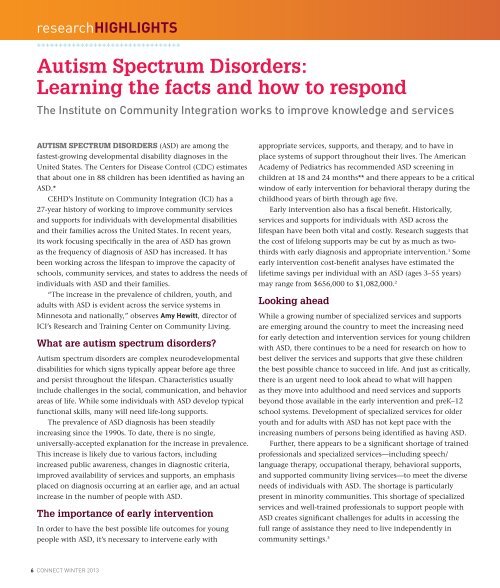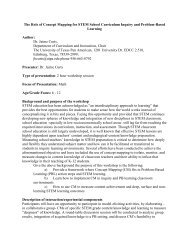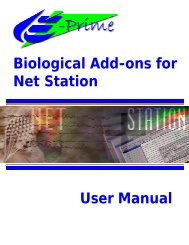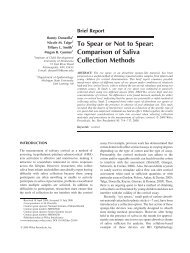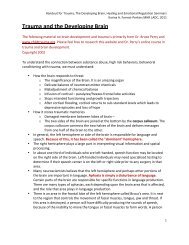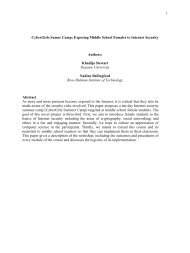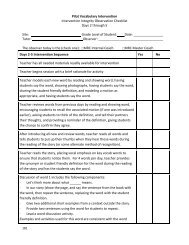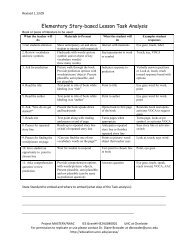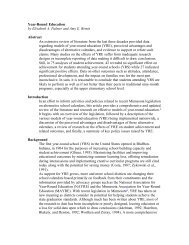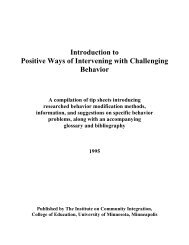COMING HOME - College of Education & Human Development ...
COMING HOME - College of Education & Human Development ...
COMING HOME - College of Education & Human Development ...
You also want an ePaper? Increase the reach of your titles
YUMPU automatically turns print PDFs into web optimized ePapers that Google loves.
esearchhighLightS<br />
+++++++++++++++++++++++++++++++++<br />
Autism Spectrum disorders:<br />
Learning the facts and how to respond<br />
The Institute on Community Integration works to improve knowledge and services<br />
auTism specTrum disorders (ASD) are among the<br />
fastest-growing developmental disability diagnoses in the<br />
United States. The Centers for Disease Control (CDC) estimates<br />
that about one in 88 children has been identified as having an<br />
ASD.*<br />
CEHD’s Institute on Community Integration (ICI) has a<br />
27-year history <strong>of</strong> working to improve community services<br />
and supports for individuals with developmental disabilities<br />
and their families across the United States. In recent years,<br />
its work focusing specifically in the area <strong>of</strong> ASD has grown<br />
as the frequency <strong>of</strong> diagnosis <strong>of</strong> ASD has increased. It has<br />
been working across the lifespan to improve the capacity <strong>of</strong><br />
schools, community services, and states to address the needs <strong>of</strong><br />
individuals with ASD and their families.<br />
“The increase in the prevalence <strong>of</strong> children, youth, and<br />
adults with ASD is evident across the service systems in<br />
Minnesota and nationally,” observes Amy hewitt, director <strong>of</strong><br />
ICI’s Research and Training Center on Community Living.<br />
What are autism spectrum disorders?<br />
Autism spectrum disorders are complex neurodevelopmental<br />
disabilities for which signs typically appear before age three<br />
and persist throughout the lifespan. Characteristics usually<br />
include challenges in the social, communication, and behavior<br />
areas <strong>of</strong> life. While some individuals with ASD develop typical<br />
functional skills, many will need life-long supports.<br />
The prevalence <strong>of</strong> ASD diagnosis has been steadily<br />
increasing since the 1990s. To date, there is no single,<br />
universally-accepted explanation for the increase in prevalence.<br />
This increase is likely due to various factors, including<br />
increased public awareness, changes in diagnostic criteria,<br />
improved availability <strong>of</strong> services and supports, an emphasis<br />
placed on diagnosis occurring at an earlier age, and an actual<br />
increase in the number <strong>of</strong> people with ASD.<br />
the importance <strong>of</strong> early intervention<br />
In order to have the best possible life outcomes for young<br />
people with ASD, it’s necessary to intervene early with<br />
6 CoNNECt WiNtEr 2013<br />
appropriate services, supports, and therapy, and to have in<br />
place systems <strong>of</strong> support throughout their lives. The American<br />
Academy <strong>of</strong> Pediatrics has recommended ASD screening in<br />
children at 18 and 24 months** and there appears to be a critical<br />
window <strong>of</strong> early intervention for behavioral therapy during the<br />
childhood years <strong>of</strong> birth through age five.<br />
Early intervention also has a fiscal benefit. Historically,<br />
services and supports for individuals with ASD across the<br />
lifespan have been both vital and costly. Research suggests that<br />
the cost <strong>of</strong> lifelong supports may be cut by as much as twothirds<br />
with early diagnosis and appropriate intervention. 1 Some<br />
early intervention cost-benefit analyses have estimated the<br />
lifetime savings per individual with an ASD (ages 3–55 years)<br />
may range from $656,000 to $1,082,000. 2<br />
Looking ahead<br />
While a growing number <strong>of</strong> specialized services and supports<br />
are emerging around the country to meet the increasing need<br />
for early detection and intervention services for young children<br />
with ASD, there continues to be a need for research on how to<br />
best deliver the services and supports that give these children<br />
the best possible chance to succeed in life. And just as critically,<br />
there is an urgent need to look ahead to what will happen<br />
as they move into adulthood and need services and supports<br />
beyond those available in the early intervention and preK–12<br />
school systems. <strong>Development</strong> <strong>of</strong> specialized services for older<br />
youth and for adults with ASD has not kept pace with the<br />
increasing numbers <strong>of</strong> persons being identified as having ASD.<br />
Further, there appears to be a significant shortage <strong>of</strong> trained<br />
pr<strong>of</strong>essionals and specialized services—including speech/<br />
language therapy, occupational therapy, behavioral supports,<br />
and supported community living services—to meet the diverse<br />
needs <strong>of</strong> individuals with ASD. The shortage is particularly<br />
present in minority communities. This shortage <strong>of</strong> specialized<br />
services and well-trained pr<strong>of</strong>essionals to support people with<br />
ASD creates significant challenges for adults in accessing the<br />
full range <strong>of</strong> assistance they need to live independently in<br />
community settings. 3


